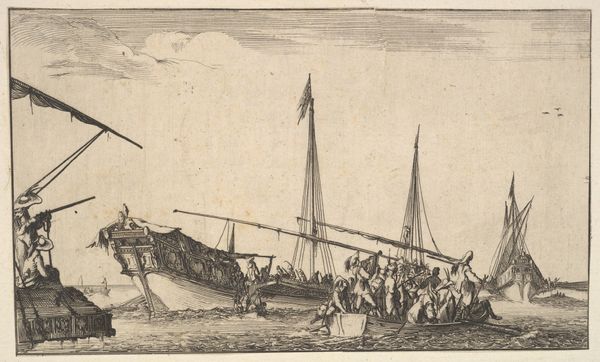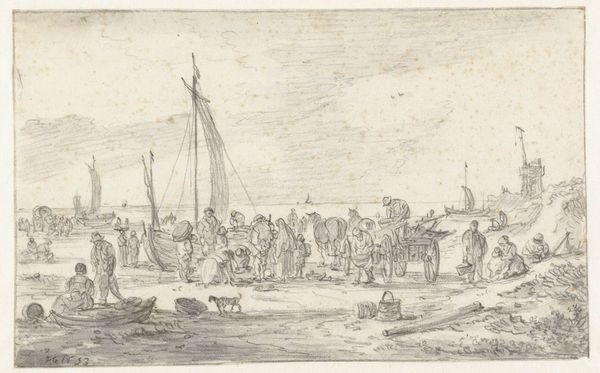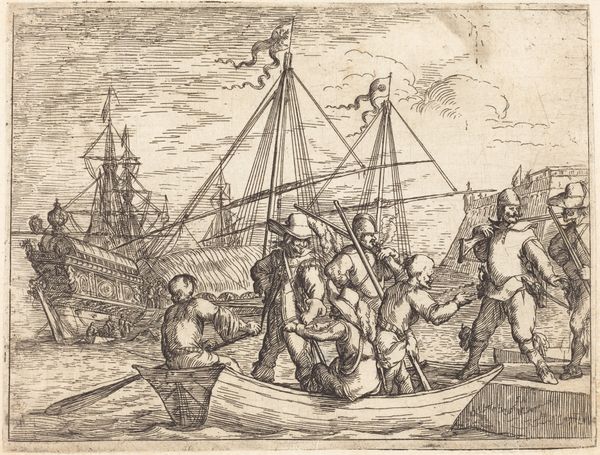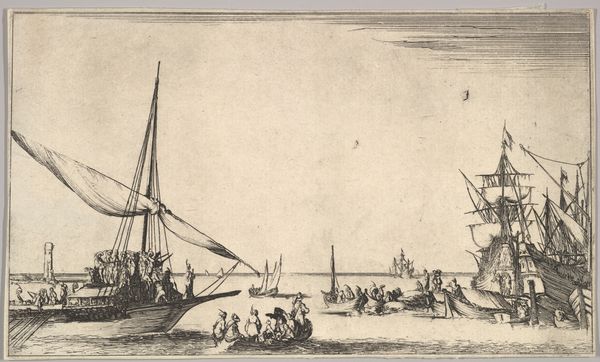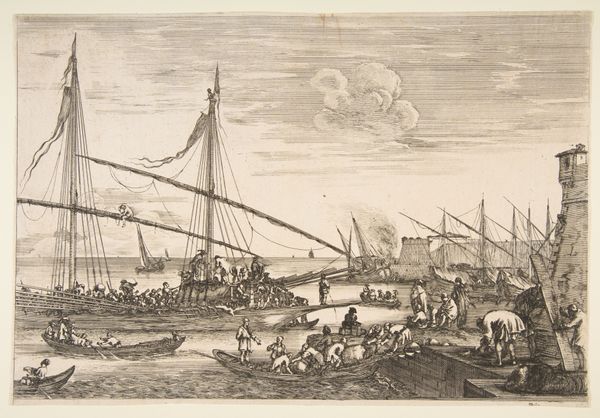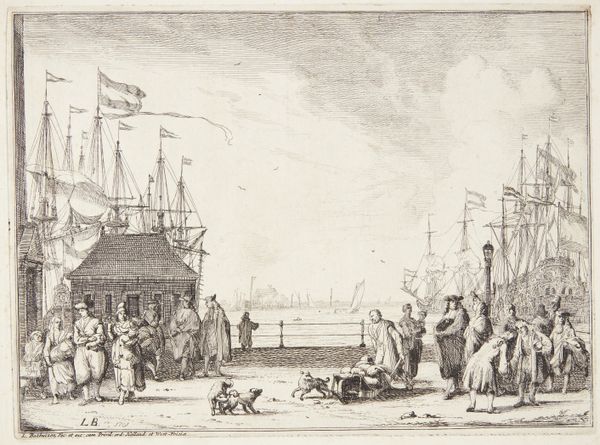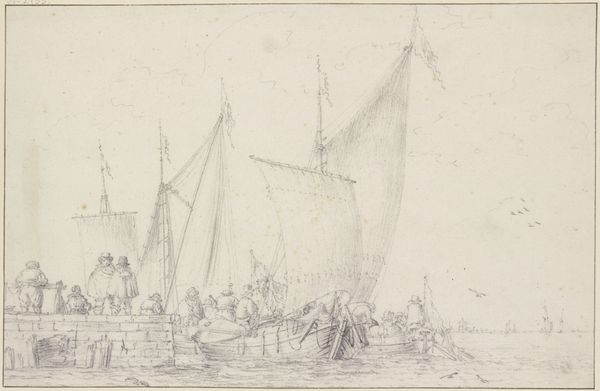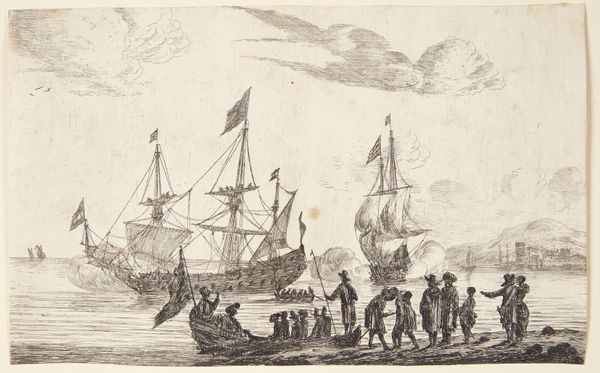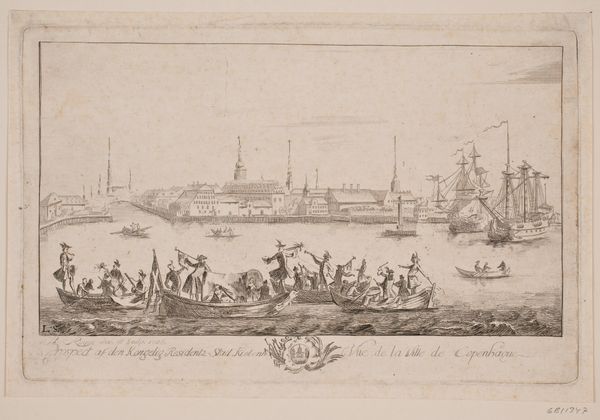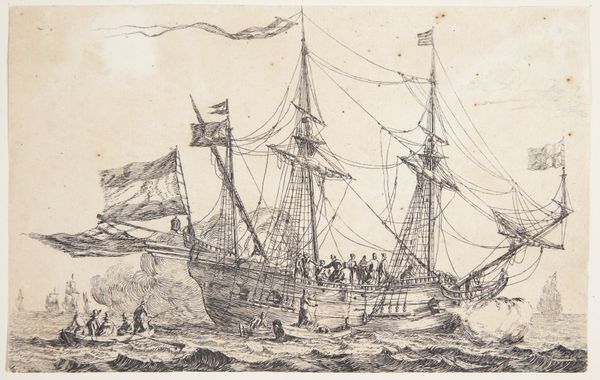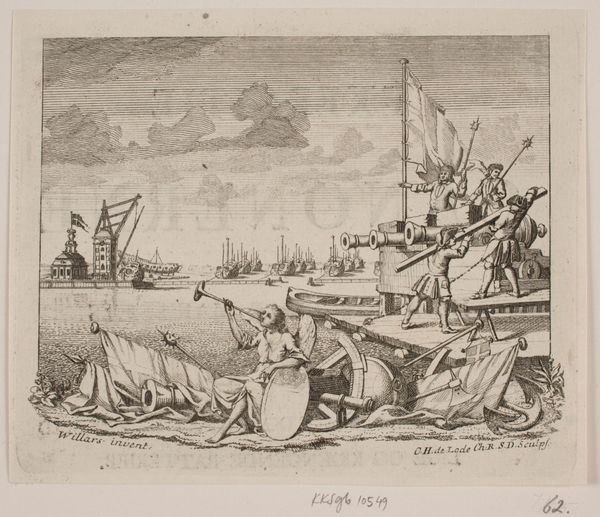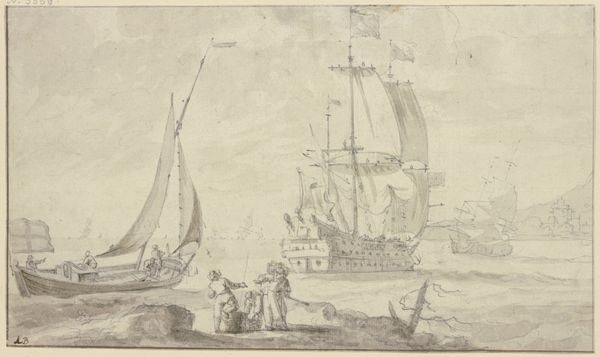
drawing, paper, ink
#
drawing
#
baroque
#
landscape
#
paper
#
ink
#
genre-painting
#
history-painting
#
watercolor
Dimensions: 276 mm (height) x 391 mm (width) (bladmaal)
Curator: This piece, dating from 1637-1638, is titled "Christian II leaves Copenhagen in 1523." It's attributed to Adam Willaerts, and it depicts a historical scene with delicate lines of ink on paper. Editor: My first impression? It feels melancholic. So many ships receding into the distance, that forlorn little boat, everyone huddled together, there's this sense of… well, irrevocable departure. Curator: That's a keen observation. As a historical piece, its genre and composition carry immense weight. Leaving Copenhagen signifies the end of Christian II's reign, an exile. The ships aren’t just ships; they represent the weight of lost power and the vastness of the unknown. Editor: Exactly! And it's all so understated, which actually amplifies the emotional impact. The muted tones of ink— almost ghostly, aren't they? Making the people feel small and… inconsequential. What symbols do you recognize? Curator: Consider the fortress gate on the shore. It’s topped with a coat of arms, the seal of Copenhagen and the kingdom, symbolizing the power Christian II is being forced to relinquish. The assembled crowds, somber and passive, they underscore the feeling of a chapter closing. The viewer sees it more from the people's point of view than the royal figure who’s abandoning it. Editor: The line work creates a beautiful sense of depth; the receding ships create this tangible feeling of distance. I also notice two people working at getting his boat to the ships. Does their physical burden suggest that it will not be easy? It might suggest resistance and heavy obstacles? Curator: Precisely. Consider also the medium itself, the ink on paper. It allows for this almost documentary feel, making this event historical. Each ship a mark of lost authority and new uncertain paths that the royal now faces, like many rulers whose era vanished. It acts like a historical witness to change. Editor: Looking at the horizon line crowded with masts, it’s clear that many leave in Christian II wake, not just himself. Perhaps the emotional charge isn't just melancholy but communal loss, which may amplify the memory’s emotion through time. What a tale it suggests about power and permanence. Curator: Yes, and Willaerts really captured a key moment in time here. Seeing Christian II rendered as he's cast out creates powerful emotional associations that ripple forward. A great illustration of how an image carries powerful stories. Editor: Well, I think I'll be imagining their stories now, afloat with that royal entourage on all those ships.
Comments
No comments
Be the first to comment and join the conversation on the ultimate creative platform.
